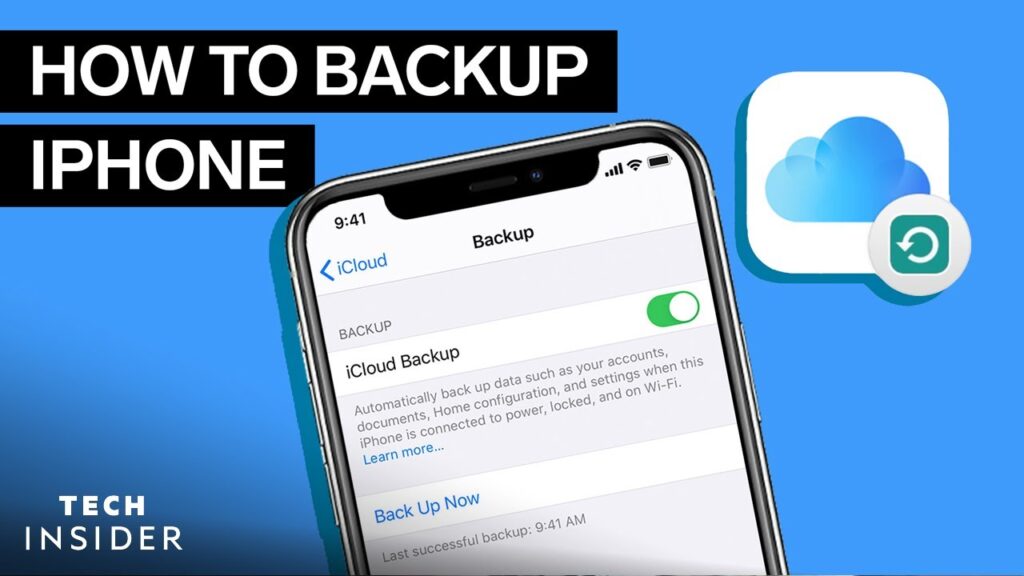Backing Up Your iPhone: A Comprehensive Guide
In the digital age, our smartphones have become an integral part of our lives, storing a wealth of personal information, cherished memories, and essential data. The iPhone, in particular, has become a ubiquitous device that many of us rely on daily. However, as with any electronic device, the risk of data loss due to hardware failure, software issues, or accidental deletion is ever-present. That’s why it’s crucial to regularly back up your iPhone to ensure the safety and security of your information.In this comprehensive guide, we’ll explore the various methods and strategies for backing up your iPhone, helping you safeguard your data and ensure a seamless transition in the event of a device replacement or unexpected data loss.
Understanding the Importance of Backing Up Your iPhone
Backing up your iPhone is essential for several reasons:
- Data Protection: Your iPhone likely contains a wealth of personal and sensitive information, such as contacts, messages, photos, and important documents. Backing up this data ensures that you can restore it in the event of a device failure, theft, or accidental deletion.
- Seamless Transition: If you ever need to replace your iPhone or switch to a new device, a backup can make the transition process much smoother, allowing you to quickly and easily restore your data to the new device.
- Disaster Recovery: In the event of a catastrophic data loss, such as a hardware failure or software corruption, a backup can be the difference between recovering your data and losing it forever.
- Peace of Mind: Knowing that your data is securely backed up can provide a sense of security and peace of mind, allowing you to use your iPhone with confidence.
Methods for Backing Up Your iPhone
There are several methods available for backing up your iPhone, each with its own advantages and considerations. Let’s explore the most common options:
iCloud Backup
iCloud is Apple’s cloud-based storage and synchronization service, and it offers a convenient way to back up your iPhone. With iCloud Backup, your device’s data, including photos, messages, app data, and more, is automatically uploaded to the cloud, ensuring that your information is securely stored and accessible from any device.To enable iCloud Backup:
- Go to Settings > [Your Name] > iCloud.
- Tap “iCloud Backup” and ensure the feature is turned on.
- Tap “Back Up Now” to initiate a manual backup.
iCloud Backup is a seamless and hassle-free option, but it does require a stable internet connection and sufficient iCloud storage space.
iTunes/Finder Backup
Another popular method for backing up your iPhone is through iTunes (on Windows) or Finder (on macOS). This approach involves connecting your device to your computer and creating a local backup of your data.To create an iTunes/Finder backup:
- Connect your iPhone to your computer using a Lightning cable.
- Open iTunes (on Windows) or Finder (on macOS).
- Select your device and click “Back Up Now.”
iTunes/Finder backups are stored locally on your computer, providing an additional layer of security and control over your data. However, they require you to remember to connect your device regularly and can be more time-consuming than iCloud Backup.
Third-Party Backup Solutions
In addition to iCloud and iTunes/Finder, there are various third-party backup solutions available, such as Google Drive, Dropbox, or dedicated backup apps like Backblaze or Carbonite. These services offer cloud-based storage and backup options, often with additional features and customization options.To use a third-party backup solution:
- Download and install the backup app or service on your iPhone and computer.
- Follow the app’s instructions to set up and configure the backup process.
- Ensure that your data is being regularly backed up to the third-party service.
Third-party backup solutions can provide more flexibility and control over your data, but they may require additional subscription fees and may not integrate as seamlessly with your iPhone as iCloud or iTunes/Finder.
Backup Strategies and Best Practices
To ensure the effectiveness and reliability of your iPhone backups, consider the following strategies and best practices:
- Automate Backups: Set up automatic backups, either through iCloud or a third-party service, to ensure that your data is regularly and consistently backed up without manual intervention.
- Verify Backups: Periodically check your backup logs or restore a test backup to ensure that the process is working correctly and that your data is being backed up successfully.
- Diversify Backup Methods: Consider using a combination of backup methods, such as iCloud and iTunes/Finder, to create multiple layers of protection for your data.
- Manage Storage Space: Monitor your iCloud and local storage space to ensure that you have enough capacity to accommodate your backup needs. Consider upgrading your iCloud storage plan or deleting unnecessary files to free up space.
- Encrypt Backups: Enable encryption for your iTunes/Finder backups to protect sensitive information, such as passwords and financial data.
- Secure Physical Backups: If you’re using external hard drives or other physical storage devices for your backups, ensure that they are kept in a safe and secure location, away from potential threats like fire, flood, or theft.
- Test Restore Process: Regularly test the restore process to ensure that you can successfully recover your data in the event of an emergency.
- Keep Backups Updated: Remember to update your backups whenever you make significant changes to your iPhone, such as installing a new app or creating new content.
Restoring Your iPhone from a Backup
In the event that you need to restore your iPhone from a backup, the process is relatively straightforward:
- iCloud Backup Restoration: If you’ve been using iCloud Backup, you can restore your device during the initial setup process or by going to Settings > [Your Name] > iCloud > Restore from iCloud Backup.
- iTunes/Finder Backup Restoration: To restore from an iTunes/Finder backup, connect your iPhone to your computer, open iTunes/Finder, and select your device. Then, click “Restore Backup” and follow the on-screen instructions.
- Third-Party Backup Restoration: The process for restoring from a third-party backup will depend on the specific service you’re using. Consult the app’s documentation or support resources for detailed instructions.
Remember that restoring from a backup will replace the current data on your iPhone, so it’s essential to ensure that you’re restoring from the correct backup and that the backup contains the data you need.
Conclusion
Backing up your iPhone is a crucial step in safeguarding your personal data and ensuring a seamless transition in the event of a device replacement or unexpected data loss. By understanding the various backup methods and strategies outlined in this guide, you can take proactive measures to protect your valuable information and enjoy the peace of mind that comes with knowing your data is secure.
Frequently Asked Questions
Why is it important to back up my iPhone?
Backing up your iPhone is essential to protect your data, enable a smooth device transition, and provide a safety net in case of disaster recovery. It ensures that your personal information, photos, messages, and other important data are securely stored and can be easily restored if needed.
What are the different methods for backing up an iPhone?
The main methods for backing up an iPhone are:
- iCloud Backup
- iTunes/Finder Backup
- Third-party backup solutions (e.g., Google Drive, Dropbox, Backblaze, Carbonite)
How do I set up an iCloud Backup?
To set up an iCloud Backup, go to Settings > [Your Name] > iCloud and turn on the “iCloud Backup” feature. You can then tap “Back Up Now” to initiate a manual backup.
What are the benefits of using iTunes/Finder for backing up my iPhone?
Backing up your iPhone using iTunes (on Windows) or Finder (on macOS) provides a local, physical backup of your data, which can offer an additional layer of security and control compared to cloud-based backups.
Can I use a third-party backup service instead of iCloud or iTunes/Finder?
Yes, you can use a variety of third-party backup services, such as Google Drive, Dropbox, Backblaze, or Carbonite, to back up your iPhone. These services offer cloud-based storage and backup options, often with additional features and customization options.
How can I ensure my iPhone backups are secure and reliable?
To ensure the security and reliability of your iPhone backups, you should:
- Automate backups
- Verify backups regularly
- Use a combination of backup methods
- Manage your storage space
- Enable encryption for local backups
- Store physical backups in a secure location
- Test the restore process periodically
What should I do if I need to restore my iPhone from a backup?
To restore your iPhone from a backup, the process will depend on the backup method you used:
- For iCloud Backup, go to Settings > [Your Name] > iCloud > Restore from iCloud Backup.
- For iTunes/Finder Backup, connect your iPhone to your computer, open iTunes/Finder, and select “Restore Backup.”
- For third-party backups, consult the app’s documentation for the specific restore instructions.
Information in Table
| Feature | Details |
|---|---|
| Backup Methods | 1. iCloud Backup 2. iTunes/Finder Backup 3. Third-party backup solutions |
| iCloud Backup | – Automatic cloud-based backup – Requires stable internet connection and iCloud storage space |
| iTunes/Finder Backup | – Local backup stored on your computer – Provides additional security and control |
| Third-Party Backup | – Cloud-based backup with various service options – Offers more flexibility and customization |
| Best Practices | – Automate backups – Verify backups regularly – Use a combination of backup methods – Manage storage space – Encrypt local backups – Secure physical backups – Test restore process |
| Wikipedia Link | Backup (computing) |
Backing up your iPhone is essential to protect your valuable data and ensure a seamless transition in case of device replacement or unexpected data loss. By understanding the various backup methods and following best practices, you can safeguard your information and enjoy the peace of mind that comes with a reliable backup strategy.



